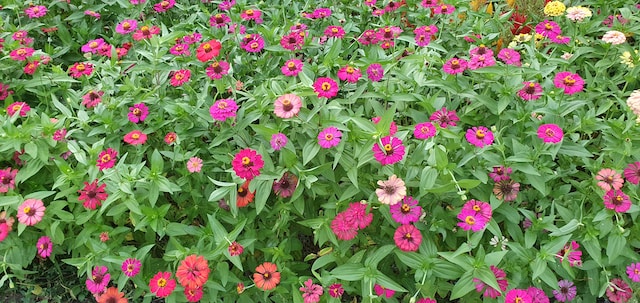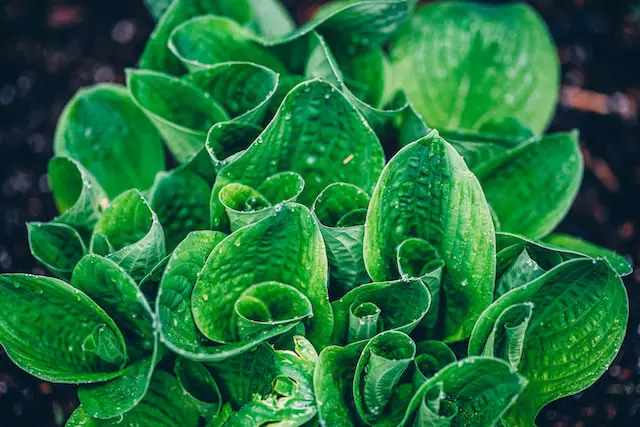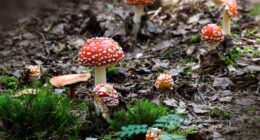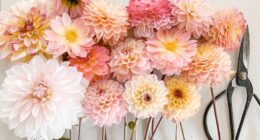Annual plants complete their life cycle in one growing season and need to be replanted every year, while perennial plants can last for many years with proper care. Understanding the difference between annual and perennial plants is important for any gardener or plant enthusiast.
Annual plants
(Photo by Serge G on Unsplash )

Annual plants are a type of plant that completes its entire lifecycle in one growing season. From seed to flower or fruit, these plants grow quickly and then die within the same year. This means they need to be replanted each year if you want them in your garden.
Many annual plants produce flowers throughout the growing season, making them popular choices for adding vibrant colors to gardens and containers. They also tend to bloom earlier than perennial plants, providing a burst of color before other plants have had time to establish themselves.
Annuals come in many shapes and sizes from tiny ground covers like creeping thyme to towering sunflowers that can grow over 6 feet tall! Some popular examples of annuals include marigolds, petunias, zinnias, and impatiens.
One advantage of planting annuals is that they tend to be less expensive than perennials since they only last for one season. Additionally, because their lifespan is so short-lived compared with perennials which may take years before flowering; you can experiment more with different colors and textures without committing long-term space or resources.
Perennial plants
(Photo by Tokyo Kohaku on Unsplash )

Perennial plants are those that live for more than two years. They can survive through different seasons and will grow back year after year, unlike annuals which only last one season. These types of plants have a deep root system which allows them to store nutrients for the next growing season.
One advantage of perennial plants is that they require less maintenance since they do not need to be replanted every year. They also tend to have larger and deeper roots, making them better at retaining water during dry periods.
Perennials come in many varieties such as flowers, trees, shrubs and ferns. Some popular examples include peonies, hydrangeas and hostas in the flower category while oak trees and junipers fall under trees.
Another benefit of perennials is their ability to attract wildlife like birds and butterflies with their bright colors or sweet nectar.
Despite all these advantages, there are some downsides to planting perennials like higher initial costs compared to annuals. It may take several years before you see any blooms from your perennial plant investment.
Though if you’re looking for a low-maintenance garden filled with beautiful colors then perennials might just be the way forward!
Annual Vs. Perennial plants – Key differences
Annual plants and perennial plants differ in their life cycle. Annuals have a one-year life cycle, which means they germinate from seed, grow vegetatively, flower, produce seeds and then die within the same year. Perennials live for more than two years as they keep growing after flowering and producing seeds.
Another significant difference between annuals and perennials is their growth habit. Annuals tend to grow quickly during the spring season, flower profusely during summer months and set seeds before dying off when autumn arrives. On the other hand, perennials may take longer to establish themselves but continue to thrive year after year.
Annuals are known for their vibrant blooms while perennials offer a wider range of colors and textures throughout different seasons. While some annual flowers like petunias or marigolds bloom repeatedly over a few months in the summer season; others such as zinnias or cosmos only bloom once in a season.
In contrast with annuals that require consistent replanting each year, many gardeners prefer perennials because they provide long-lasting beauty without needing frequent replacement. Some popular examples include lavender or daisies that can survive harsh winter conditions by going dormant underground until spring returns.
Understanding these key differences between annual plants and perennial plants helps us make informed decisions when planning our gardens – whether we want low-maintenance displays or colorful bursts of seasonal color every year!
What are annual herbaceous plants?
Annual herbaceous plants are those that complete their life cycle in one growing season. These plants grow from seed, produce flowers and seeds, and die within a year. Herbaceous means non-woody stems, which indicates that these plants lack the woody growth habit of trees and shrubs.
Annual herbaceous plants are typically faster-growing than perennials because they have to grow quickly enough to flower and set seed before dying off for the winter. They can be grown as ornamentals or harvested for food like vegetables such as tomatoes, cucumbers or herbs like basil.
Some annuals reproduce both by seed and vegetatively through stolons or runners (e.g., strawberry). This is why some annuals may come back year after year even though they’re classified as annuals.
Common examples of annual herbaceous plants include marigolds, zinnias, impatiens, petunias and sunflowers.
Examples of Annual plants
Annual plants are a great way to add some vibrant colors and textures to your garden. These plants complete their life cycle within one year, meaning they grow from seed, flower, produce seeds and die all in the same growing season.
One popular example of an annual plant is the marigold. Its cheery yellow and orange flowers make it a favorite for adding a pop of color to any landscape or garden bed.
Another beautiful annual plant is petunias. With their trumpet-shaped blooms in shades of pink, purple, red and white, petunias create a stunning display when planted in mass.
Impatiens are also an excellent option for adding color as they come in many different hues such as pink, violet and coral.
Zinnias are another classic choice for annuals with their bright blossoms that bloom throughout the summer months.
Annuals can be used alone or mixed with other types of plants like perennials or shrubs for added texture and contrast.
Examples of Perennial plants
Perennial plants are a fantastic addition to any garden as they can last for years, even decades. Unlike annuals, perennials come back each year from the same root system. There are many different types of perennial plants available that can add color and interest to your landscape.
One popular example of a perennial plant is the Hosta. Hosta’s are known for their large leaves in various shades of green and sometimes white or yellow variegations. They also produce delicate lilac-like flowers on tall stalks during the summer months.
Another popular type of perennial plant is the daylily. Daylilies feature striking blooms that open up for only one day before withering away, making room for new blossoms to take their place. These flowers come in a variety of colors including shades of orange, pink, red, purple and yellow.
The peony is another favorite among gardeners due to its showy blooms which range in color from white through pink and deep reds. Peonies bloom in late spring or early summer producing massive flower heads atop sturdy stems.
Other examples include Black-eyed Susan’s bright yellow daisy-like petals complemented by dark brown centers; Coneflowers’ beautiful petals surrounding a spiky center; Sedum’s thick foliage with small star-shaped flowers ranging from pale pinks to intense purples; and Russian Sage’s airy spikes covered with tiny lavender-blue flowers that emit an aromatic scent when crushed between fingers.
With so many options available at nurseries or online retailers nowadays there is no shortage of choices when it comes to picking out Perennial Plants suited best for your garden!
What are types of herbaceous plants?
Herbaceous plants are a diverse group of plants that can be classified into various types based on different characteristics. Here are some types of herbaceous plants:
Wildflowers: These are native or indigenous flowers that grow spontaneously and naturally in the wild.
Bulbs: These plants have underground storage structures called bulbs, which store nutrients and help them survive harsh conditions.
Grasses: These plants have long, narrow leaves with parallel veins, and they produce flowers in spikes or clusters.
Groundcovers: These low-growing, spreading plants cover the ground like a carpet and help prevent soil erosion.
Ferns: With their delicate fronds and spores for reproduction, ferns add texture to shady gardens.
Succulents: Plants such as cacti and sedums have thick fleshy leaves to store water during dry periods.
These are just a few examples of the many types of herbaceous plants out there! Each type has its unique characteristics and benefits when it comes to gardening or landscaping projects.
Featured Image By – Justin Sinclair on Unsplash








